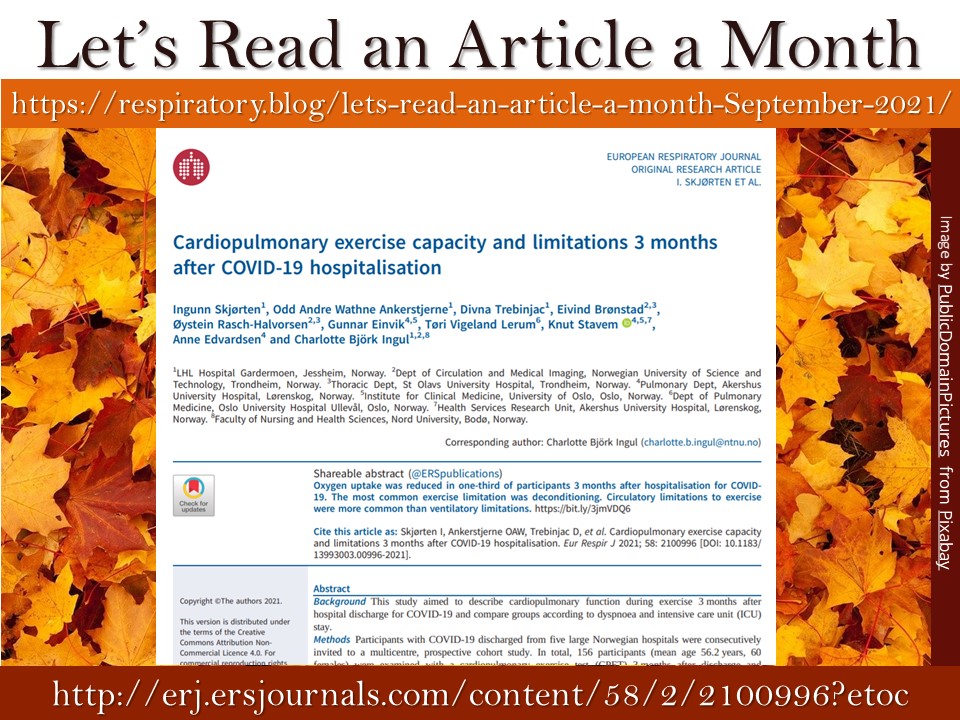
Every month I try to read an open-access article. After reading the article, I share the title and associated link with my followers. This is to encourage clinicians to read articles, stay up to date, and continue to grow.
The objective of this paper is to “evaluate respiratory function 4 months after diagnosis in patients who survive severe acute respiratory syndrome coronavirus 2 (SARS-CoV-2) infection and the difference between patients with or without initial lung involvement” (p1).
Medium-term impact of COVID-19 on pulmonary function, functional capacity and quality of life
By: Fabio Anastasio, Sarah Barbuto, Elisa Scarnecchia, Paolo Cosma, Alessandro Fugagnoli, Giulio Rossi, Mirco Parravicini, and Pierpaolo Parravicini.
European Respiratory Journal 2021 58: 2004015; DOI: 10.1183/13993003.04015-2020
Link to the article: https://erj.ersjournals.com/content/58/3/2004015?etoc
Reasons I liked this article
- The age range for this study was 18 to 80 years old (p2). Also, a detailed assessment was attained from the subjects, of course post infection, which included SF-12 and IPAQ questionnaires, 6MWT, and a comprehensive PFT (p2).
- This study shows “a reduction of respiratory function and exercise capacity secondary to SARS-CoV-2 pneumonia, mostly in patients who developed ARDS during the acute phase” (p9).
- The authors suggest that the data may indicate that “respiratory evaluation does not appear to be necessary in patients without pneumonia and without symptoms. DLCO, 6MWT and plethysmography could be avoided in patients without pneumonia, performing only spirometry with bronchodilator responsiveness testing…In contrast, in patients who developed ARDS, DLCO, 6MWT and complete spirometry could uncover presence of residual pulmonary and functional impairment, with need for respiratory rehabilitation and gradual physical activity “ (p10).
As always, take the time to read this study. There is a lot of information and data covered in the study which I cannot cover here. As a disclaimer, continue to follow guidelines for ordering PFTs and providing patient care as recommended by your employer and regulatory body.
Happy reading and learning,
Farzad Refahi
October 6th, 2021
https://respiratory.blog/lets-read-an-article-a-month-october-2021/



